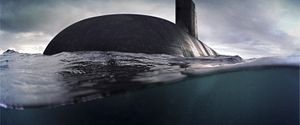The Australian Department of Defense (DoD) and French state-owned submarine builder Naval Group are expected to sign a crucial strategic partnership agreement (SPA) for the Royal Australian Navy’s SEA 1000 Future Submarine Program (FSM) by December 21, according to media reports.
Negotiations over the SAP, which kicked off in 2017 and were expected to be concluded by September at the latest, have reportedly stalled time and again over the last few months due to various disagreements over intellectual property and warranty periods for defects. The DoD has also expressed concerns over a future sale of Naval Group, which is majority owned by the French state, to a private entity and in what way this would impact Australian-French collaboration.
Australia and France concluded an intergovernmental agreement (IGA) for the construction of 12 Shortfin Barracuda Block 1A submarines, a diesel-electric derivative of Naval Group’s Barracuda-class nuclear attack submarine (SSN), under the RAN’s FSM program in December 2016. (Long thought to be the frontrunner for the contract, Japan failed in its bid to build Australia’s new submarine fleet.) Up until now, Naval Group has been working under a $361 million 2016 design and mobilization contract while SPA negotiations were ongoing.
Under the IGA, the 12 subs, save for some specialized parts, will be built in Adelaide in South Australia, home to the Australian Submarine Corporation (ASC). Initial design work for the new submarine class is currently taking place in Adelaide and Naval Group’s headquarters in Cherbourg, France. A detailed design contract, however, can only be concluded after the signing of the SPA. Construction of the first submarine is expected to begin in 2022 with the first boat delivered to the RAN by the early 2030s.
Building the submarines is “extravagantly expensive, highly risky and in an era of heightened tensions in the Asia Pacific compromises the future defense of Australia,” a 2017 study argued. “Australia will be left with a submarine capability that is either seriously inadequate or, in the worst case, non-existent for several years.” According to the report:
Engineering experts consider the technical risks around the Shortfin Barracuda to be high. It will be a very large conventional submarine and the engineering challenges are formidable. Most surprisingly, the present concept design does not incorporate modern batteries or AIP, considered by most experts as essential in a future operational environment where submarine detection technologies will have improved significantly.
Instead of procuring redesigned diesel-electrics subs, Australia should opt for off-the-shelf submarines, either German Type 212 or French Scorpene-class diesel-electric attack subs, the report argued.
































